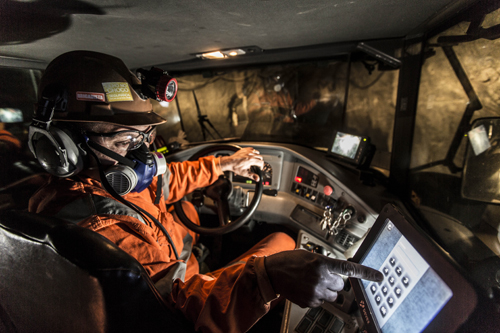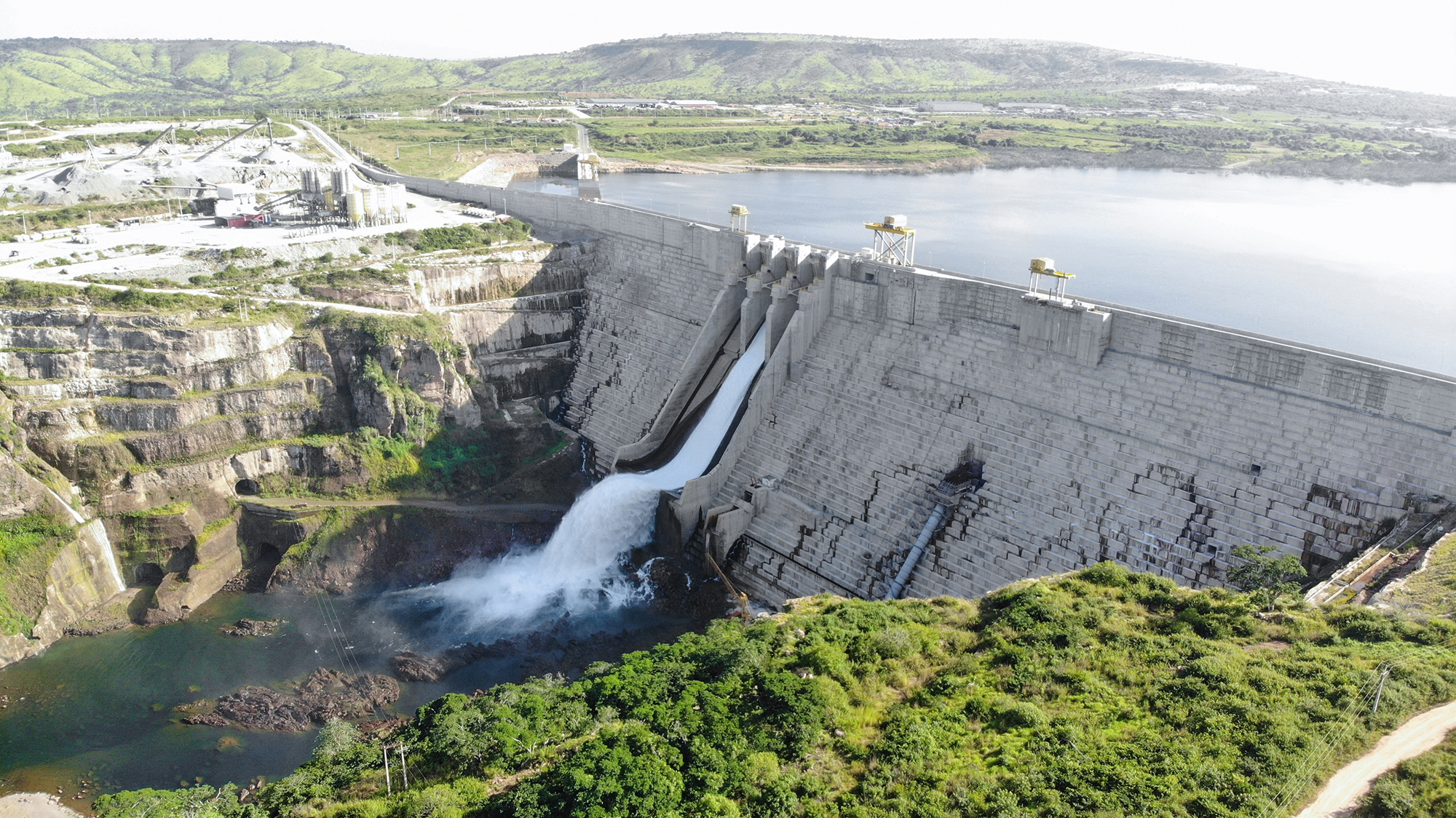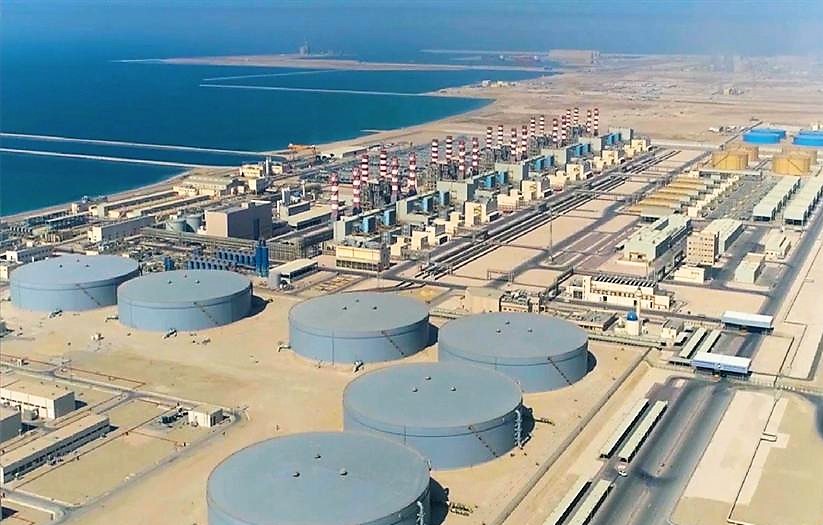
At the moment, though Devex has opened a few offices in other countries where clients have adopted its systems, it is firmly a Brazilian company, with 85 percent of its $35 million annual revenue generated domestically. However there is no better seed-bed for new technology than Brazil, and forward thinking global mining groups are now taking notice of Brazil not just as a country with huge resources to extract but as a developer of smart ways of doing that.
Devex was founded in 1997 by Guilherme Bastos Alvarenga. Dr Alvarenga was employed by Brazil’s biggest integrated steel company Companhia Siderúrgica Nacional (CSN) with responsibility for introducing new technology at its Casa de Pedra mine. “It was while working at Casa de Pedra, at that time the third largest iron ore mine in Brazil, that I realised the extent of the need for far greater mine automation,” he says. At the same time he was completing his masters degree at the Universidade Federal de Minas Gerais (UFMG). At the university he had developed an in-house open pit solution for his employer, and on the award of his masters, with the agreement of CSN and in partnership with two other researchers from UFMG he took the IP into a spin-off company that is now Devex. His first clients were CSN itself, and Minerações Brasileiras Reunidas (MBR), another large iron ore producer now owned by Vale.
Over the following nine years he combined academic work with growing the company, joining the Universidade Federal de Lavras (UFLA) as a professor, and serving as head of its computer science department for the three years to 2008. However Devex has been on a growth track since 2002 when it abandoned its work as an IBM reseller and focused 100 percent on developing its own products, notably SmartMine, its solution for mine operation control and optimisation in matters such as quality control, freight-use optimisation, maintenance control and telemetry. The many companies that have SmartMine include Vale, CSN, Kinross, Mineração Rio do Norte, V&M and AngloGold Ashanti.
There have been several reasons for Devex’s success since 2002, Alvarenga explains. The mines had become used to adopting standalone, ring fenced solutions based on modules within existing ERP platforms: “Right from the outset we approached the market in a more flexible and integrated way, and that appealed to the market. During the last decade everybody was looking for a fleet management system that would integrate with their legacy systems. That was our USP at that time and doing that gave us a very deep knowledge and expertise in understanding the realities of mining in remote environments.”
However today the market has entered a different phase, he says. “You must understand that in mine sites they have systems that control processes such as flotation circuits, crushers, and the like. But these are linked to many very complex process in the pit, where we find high value capital assets like excavators, trucks, dozers, drillers, blasting equipment, and so on - and there is no automation system for this part of the pit. Fleet management is not the final solution!”
Devex accordingly developed Extreme, which he describes as a more complete process solution where fleet management is just one building block among many. Extreme is a complete solution for mine automation that monitors and manages all the systems and equipment, fixed or mobile, auxiliary or core production, and even the activities of people. With Extreme, he says, it is at last possible to plan any type of activity in the mine, monitor it on a single system and follow it to its conclusion in a realistic 3D environment. “Extreme approaches the mine by trying to understand the whole process and control each task from start to finish. We really understand these processes: this is our approach to the market and where we score over the competition.”
You can either migrate to Extreme across the board or bolt it on to the legacy system. Its open and extensible architecture represents a completely new approach to mine automation, he confides – and it has a great future. Devex also has a mine process automation solution developed for underground mine, SmartMine|UG). SmartMine|UG, already installed in two underground mines and Extreme, installed in one open pit mine, are the most exciting things to have happened in mining for many years – this level of automation cuts costs, improves safety, makes the whole operation faster and more efficient and takes the guesswork out of mineral production. “I really feel we have brought into the 21st century by enabling these systems to work on iPads, tablet devices and iPhones if needed. There is no known form of technology from any other provider who can take it to this level, and few of our competitors have our 'collaborative approach'. For us that is one of the many keys to helping our clients.”
The HSE agenda is something companies are belatedly waking up to, and employee protection is an area that could be improved on in many mining jurisdictions. To keep people safe you need to know where they are. The lateral thinking that produced SmartMine and Extreme led Devex to question the effectiveness of current RFID-based systems. “RFID signals do not work reliably in underground mines,” Dr Alvarenga explains, “partly because of their low power output, partly because of competition from other equipment. We developed SafetYou which is a wireless system based on a small device on the operator’s belt and which is very reliable in tracking people and mapping their location individually or in groups At last you can be certain exactly where people are in the mine, in real time.”
Among the other highly effective products Devex has developed for underground mines is eControl to manage the electric equipment in equipment such as fans, water pumps and substations.
SmartMine and its family of satellite products meanwhile cater for those clients who are not ready to go for fully blown automation. The Exacta family is a high precision element within SmartMine that is installed on the onboard computer of individual key equipment like dozers and loaders and the like giving the operator total control. When any action does not go according to plan, alarms go off and the operator instantly receives all the information needed to fix the error.
The company has grown in a fairly complex way, organically, by acquisition and by entering strategic partnerships. Early in 2011 it bought MineInside, a software development and data integration company as well as SmartCargo, a program that optimises equipment utilisation. In 2010 Devex became the exclusive supplier in Brazil of SafeMine, a traffic management and specifically a collision avoidance system proved in the industry since 2003.
Having cracked the Brazilian market, and to a large having expanded in South America with considerable success in Chile, Devex is now ready to take on the world. It recently announced a strategic partnership with CAE Mining under which CAE will distribute Devex products in Canada, Russia, and a group of CIS countries including Kazakhstan. “Devex does not plan to do absolutely everything but Extreme is going to be the platform because it is an open architecture system that can work independently or integrate with third party products. We are here to sell our services but at the same time we want to bring in OEMs and large automation companies as collaborators in this system.”
The company opened an office in Brisbane in 2011following Vale’s decision to develop a massive nickel complex in New Caledonia, is currently setting up a new office in Mexico. Guilherme Alvarenga is as flexible in his approach to geographical expansion as to software development, and will do whatever it takes, opening up offices and hiring local experts, or going into partnership with like minded partners as seems most appropriate. His aspirations are realistic though they are nothing if not broad. “I don’t think our new approach leaves room for many competitors. We think Devex has a very big opportunity ahead. Today I have 85 percent of my revenue in Brazil – as we expand I am confident we’ll grow 20 times bigger than we are today.”
Written by John O’Hanlon, research by Jeff Abbott
DOWNLOAD
 Devex-AM-Mining-Aug13-Bro-s_0.pdf
Devex-AM-Mining-Aug13-Bro-s_0.pdf













